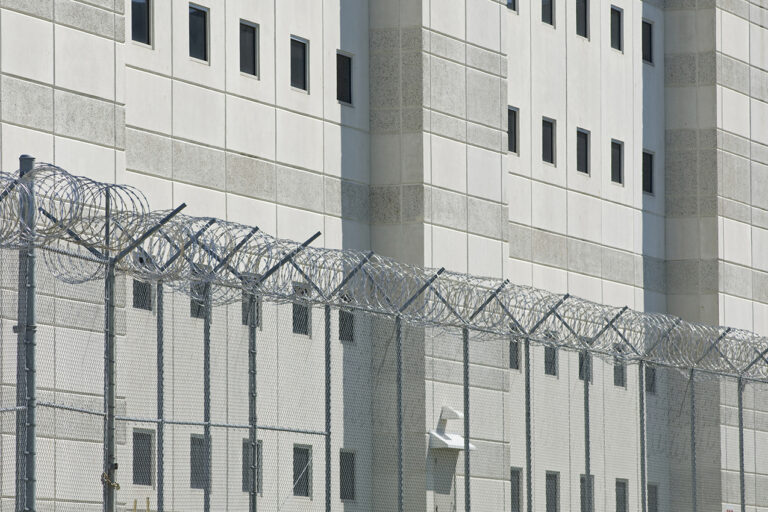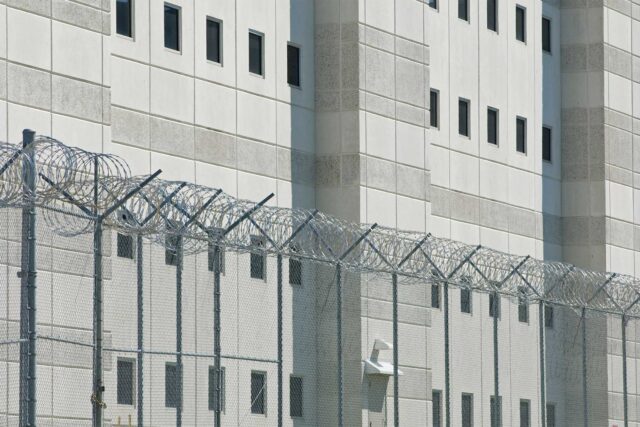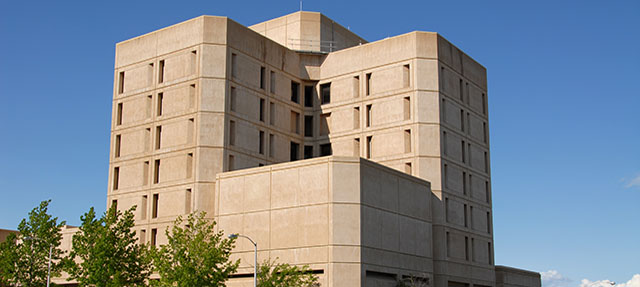- Jails face a challenging environment amid the pandemic.
While the long-term impacts of the pandemic on county jail systems are currently unknown, the pandemic has created a number of challenges. Local criminal justice directives to avoid arrests and bookings as well as an emergency statewide zero-bail order most likely reduced the number of individuals coming into jails. Statewide data on jail bookings support this notion, as the number of weekly bookings dropped from about 17,000 in February 2020 to roughly 12,000 in September 2020. However, given crowded conditions in some jails and jail systems’ limited health care infrastructure, it has been hard to prevent outbreaks among inmates and staff. In addition, the state prison system has not allowed transfers of jail inmates with prison sentences throughout most of the pandemic, requiring these inmates to be held in county jails until the state has the ability to safely place them in state prisons. - The pandemic led to initial declines in the jail population.
In February 2020 the average daily jail population stood at about 69,000. Criminal justice responses to the pandemic caused an immediate drop in the population, which declined 30% to roughly 48,500. However, the jail population then grew by 15% (almost 7,200 inmates) between May and September 2020. One contributing factor to the recent increase may be the growing number of individuals who are awaiting transfer from county jail to state prison. The number of individuals awaiting transfer has increased every month since March. As of September 2020, jails reported over 6,000 inmates awaiting transfer, more than four times the number (about 1,400 inmates) in September 2019.
County jail populations dropped dramatically after Proposition 47 and during the pandemic
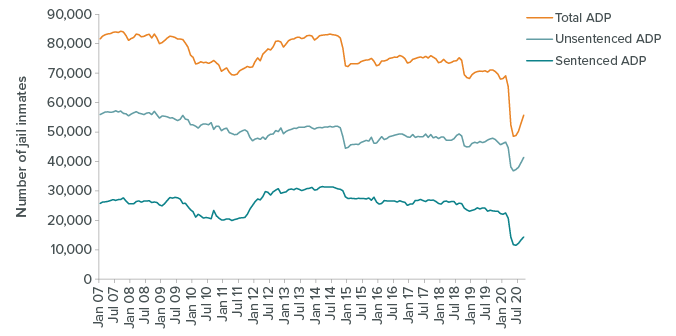
SOURCE: Jail Profile Survey, January 2007–September 2020, Board of State and Community Corrections.
NOTES: ADP = Average daily population.
- Prior to the pandemic, jail populations had fluctuated widely due to various reforms.
The number of jail inmates rose following public safety realignment in October 2011, which gave jails oversight over most non-serious, non-violent, non-sexual felons, parolees who violate their parole, and individuals who violate the conditions of their post-release community supervision. From September 2011 to October 2014, the jail population rose 14% from 71,800 to 82,000 inmates, leading to overcrowding. Proposition 47 in November 2014, which reclassified several property and drug crimes from felonies to misdemeanors, relieved crowding, and reduced the number of people released due to jail capacity constraints.
Capacity-constrained releases have fallen since the passage of Proposition 47 in 2014
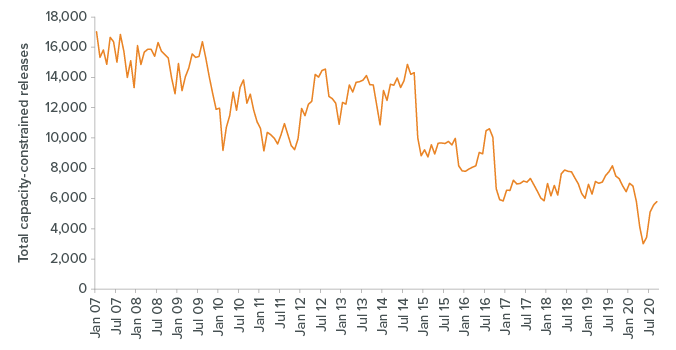
SOURCE: Jail Profile Survey, January 2007–September 2020, Board of State and Community Corrections.
NOTES: Release figures include both non-sentenced and sentenced inmates.
- The jail population is largely male and being held for felonies.
As of September 2020, men make up the vast majority of the jail population (90%). More than 74% of all inmates are awaiting either arraignment, trial, or sentencing. Inmates held on a felony charge or conviction account for 90% of the jail population. - California has a large number of diverse—and aging—county jail facilities.
California’s counties operate several types of jails, including court holding facilities, temporary holding facilities, and long-term facilities. Nearly all counties operate at least one long-term facility, with over 115 such facilities statewide, totaling over 79,000 beds (up from 76,000 in 2011). Some counties have built new facilities in recent years, but over half of county facilities in operation in 2018 were built before 1990. - Plans to build new jails should take into account recent population changes.
Funding programs in AB 900 (2007), SB 1022 (2012), SB 863 (2014), and SB 844 (2016) have made $2.5 billion available to renovate and construct county jails. As of November 2020, $2.3 billion has been awarded to 57 projects in 45 counties. Twenty-three projects decrease bed capacity, while 27 increase it, with a projected net gain in rated capacity of about 10,000 beds statewide. Of the 57 projects, 19 have been completed. In addition to new or replacement jail beds, counties will gain much-needed space for medical, educational, and other services that can help prepare inmates for successful reentry into the community. The drop in inmate population levels after Proposition 47 and during the current pandemic should be considered when planning long-term jail bed needs, especially given the cost and length of time of construction.
Sources: Jail Profile Survey 2007–2020, BSCC Rated Capacity by Facility Updated December 1, 2020, Jail Program Construction Updated November 10, 2020: Board of State and Community Corrections (BSCC).
